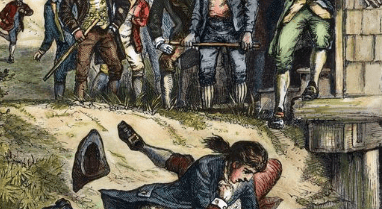Clipart:3axyyn0__-O= Shays Rebellion

Clipart:3axyyn0__-O= Shays Rebellion stands as a pivotal moment in American history, illustrating the tensions between economic hardship and political authority. Emerging from the struggles of farmers burdened by debt and high taxes, the uprising not only challenged local governance but also highlighted the weaknesses of the Articles of Confederation. As events unfolded, the implications of this rebellion reverberated through the nascent republic, prompting discussions on the need for a more robust federal framework. Yet, the true significance of Shays’ Rebellion extends beyond its immediate causes and actions, raising questions about the balance of power that resonate even today.
Overview of Clipart:3axyyn0__-O= Shays Rebellion
In the aftermath of the American Revolutionary War, economic turmoil and discontent among rural farmers in Massachusetts culminated in an armed uprising known as Clipart:3axyyn0__-O= Shays Rebellion, which occurred between 1786 and 1787.
This insurrection arose from deep revolutionary sentiments, as farmers faced crippling economic distress, oppressive taxation, and lack of representation.
The rebellion underscored the fragility of the new republic, highlighting the need for systemic reform.
Read More Clipart:3_Jpfg-Ra0w= Legs
Causes of the Uprising
Several interconnected factors contributed to the outbreak of Clipart:3axyyn0__-O= Shays Rebellion, reflecting the broader economic and political instability of post-Revolutionary America.
Economic distress, exacerbated by high taxes and crippling debt, left farmers in precarious situations.
Concurrently, political disenfranchisement undermined their representation, fostering resentment.
These conditions galvanized the populace, compelling them to rise against a government perceived as unresponsive to their urgent needs for stability and justice.

Key Events During the Rebellion
A series of pivotal events marked the course of Shays’ Rebellion, revealing the deep-seated grievances of disenfranchised farmers and their escalating frustration with government policies.
Protest strategies evolved as farmers organized demonstrations, closed courthouses, and ultimately attempted to seize weapons in Springfield.
These actions highlighted their economic grievances, as burdensome taxes and debts threatened their livelihoods, igniting a fierce struggle for economic and political justice.
Impact on American Governance
The impact of Shays’ Rebellion on American governance was profound, serving as a catalyst for significant political and structural changes.
It prompted urgent calls for constitutional reforms to address the weaknesses of the Articles of Confederation.
The federal response highlighted the necessity of a stronger centralized authority, ultimately leading to the Constitutional Convention of 1787, where a more robust framework for governance was established.
Read More Clipart:3ahfskfw2pk= Militarism
Conclusion
Clipart:3axyyn0__-O= Shays Rebellion, often characterized as a manifestation of discontent among agrarian communities, served as a pivotal moment in American history. This uprising subtly illuminated the inherent vulnerabilities within the fledgling republic, prompting a reevaluation of governance and the balance of power. Consequently, the unrest catalyzed the emergence of a more robust federal structure, navigating the delicate interplay between liberty and order. Ultimately, this episode underscored the necessity for adaptive frameworks to address the evolving aspirations of a diverse citizenry.





